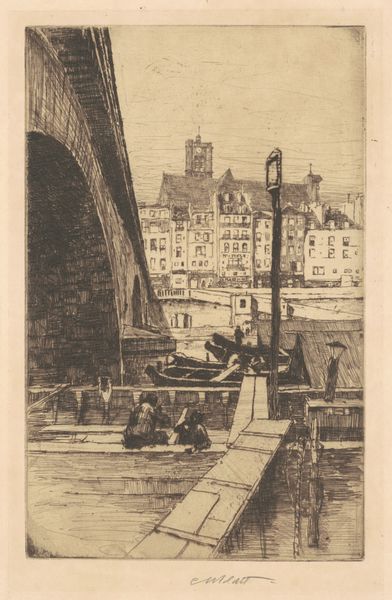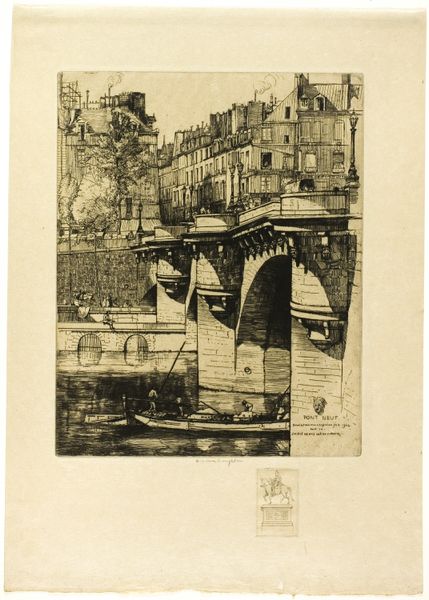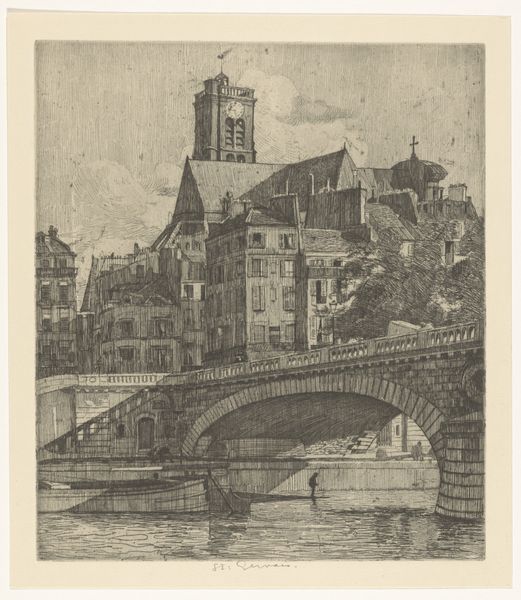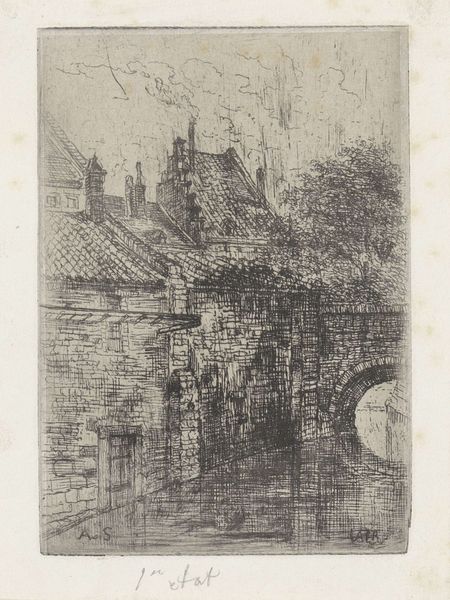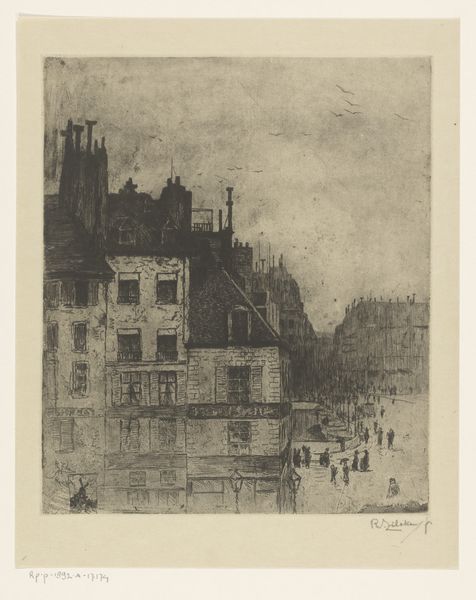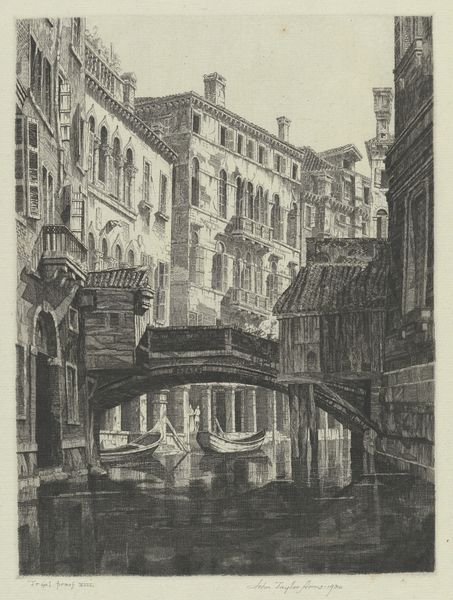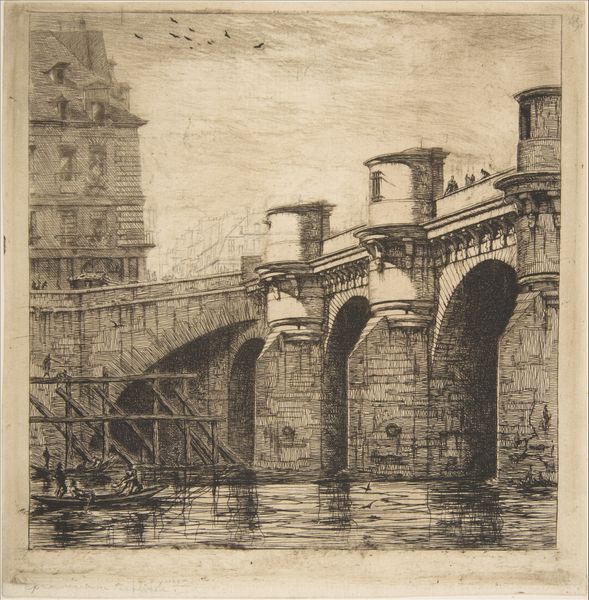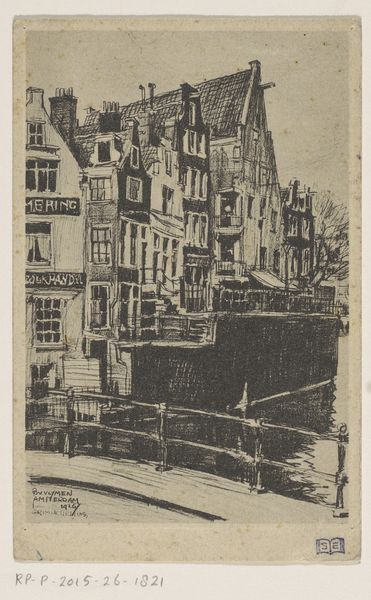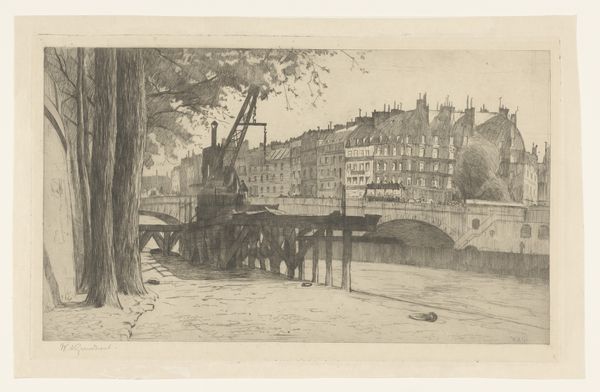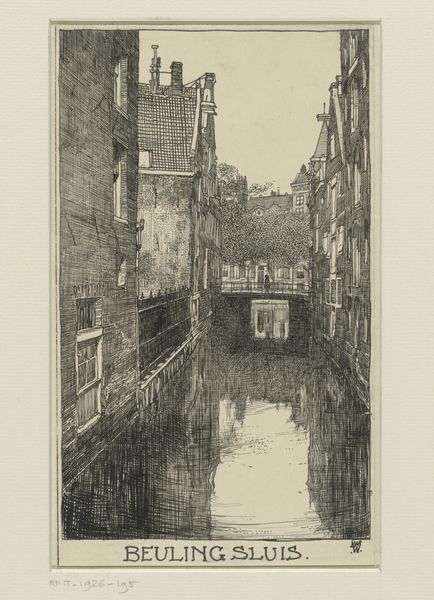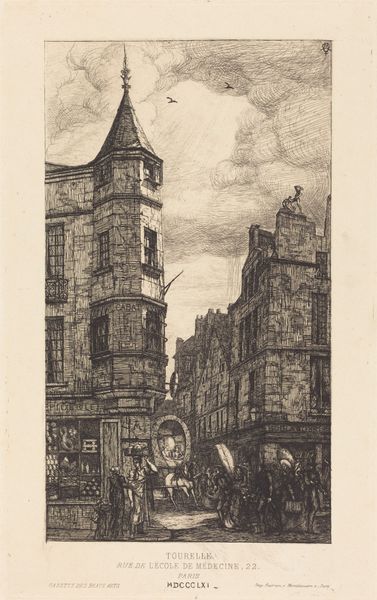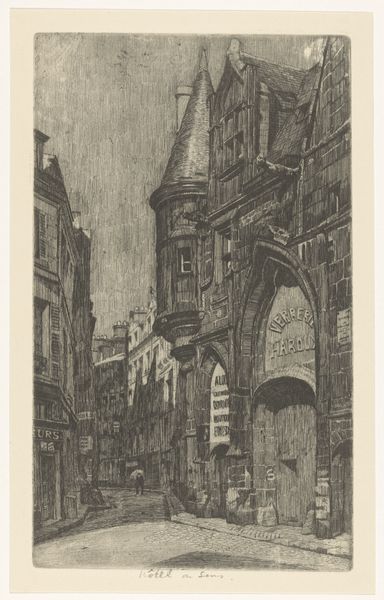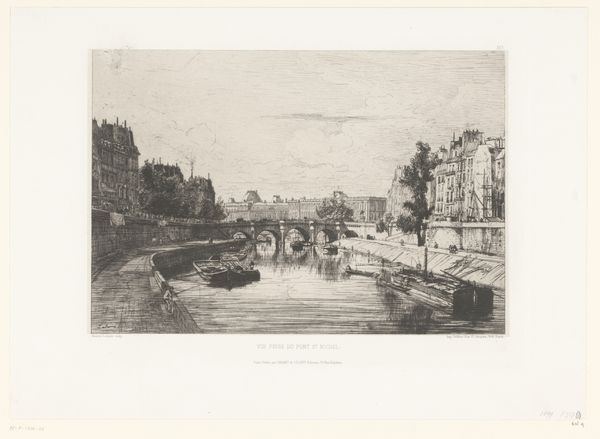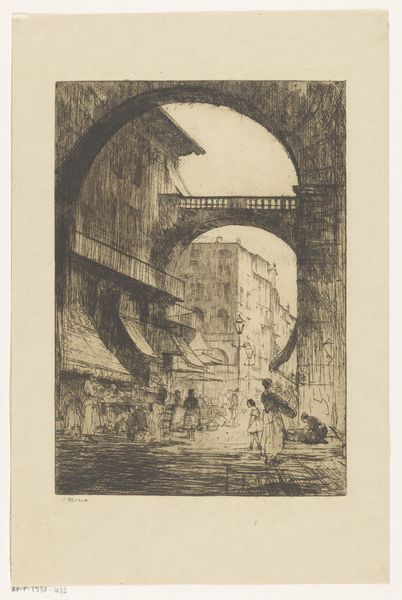
Dimensions: height 300 mm, width 247 mm
Copyright: Rijks Museum: Open Domain
Editor: This is Martin Monnickendam’s "Pont Neuf in Parijs," an etching made sometime between 1884 and 1931. I find the gray tones and linear quality captivating; it makes me think about the density and age of the city. How do you interpret this work, thinking about its historical context? Curator: This etching really encapsulates a critical juncture in Parisian history, wouldn't you say? It captures the iconic Pont Neuf, but it also invites us to consider the rapid urbanization occurring at the time. How might the rise of industrial capitalism in the late 19th century, reflected in the buildings lining the bridge, have affected the city's social fabric and artistic movements? Editor: That's a great point. The "G. Butz Opticien" sign on one of the buildings hints at technological advancement and commerce. It is easy to romanticize cityscapes, but what stories are perhaps excluded from a print like this one? Curator: Precisely. While the impressionistic style can feel whimsical and pretty, the perspective chosen here centers the established structures while seemingly diminishing the presence of everyday life and laborers who helped build that cityscape. It leads me to wonder: whose Paris is being represented and celebrated, and whose is being erased or overlooked? The art world still grapples with these issues of representation and visibility, and grappling with works like this one makes you wonder about the continued elisions present in modern art too. Editor: I never would have considered it from that angle. Thinking about the narrative that’s absent is just as important as considering what’s visible. Curator: Absolutely! It’s this awareness of absences and power dynamics that truly enriches our understanding of art. It prompts us to ask critical questions, sparking essential conversations and action.
Comments
No comments
Be the first to comment and join the conversation on the ultimate creative platform.
